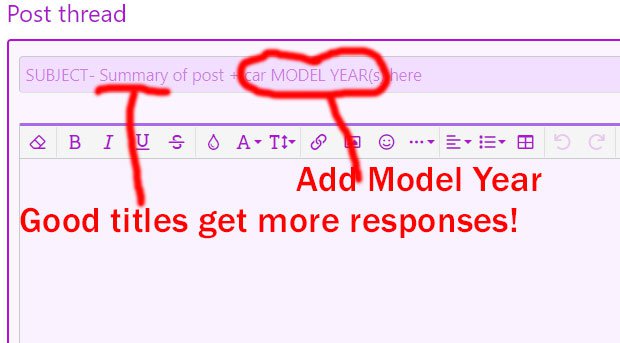|
Drive Cycle Procedure
| Purpose of
Drive Cycle Procedure |
Drive Cycle
Preparation | 1. Install scan tool. Turn key on with the engine off. Cycle key off, then on. Select appropriate Vehicle & Engine qualifier. Clear all DTC's/ Perform a PCM Reset. | Bypasses engine soak timer. Resets OBDII Monitor status. |
| 2. Begin to monitor the following PIDs: ECT, EVAPDC, FLI (if available) and TP MODE.
Start vehicle WITHOUT returning to Key Off. | |
| 3. Idle vehicle for 15 seconds. Drive at 64 Km/h (40 MPH) until ECT is at least 76.7°C (170° F). | |
Prep for Monitor Entry | 4. Is IAT within 4.4 to 37.8°C (40 to 100° F)? If Not, complete the following steps but, note that step 14 will be required to "bypass " the Evap monitor and clear the P1000. | Engine warm-up and provide IAT input to the PCM. |
HEGO | 5. Cruise at 64 Km/h (40 MPH) for up to 4 minutes. | Executes the HEGO monitor. |
EVAP | 6. Cruise at 72 to 104 Km/h (45 to 65 MPH) for 10 minutes (avoid sharp turns and hills) Note, to initiate the monitor: TP MODE should =PT, EVAPDC must be >75%, and FLI must be between 15 and 85% | Executes the EVAP Monitor (If IAT is within 4.4 to 37.8° (40 to 100°F)) |
Catalyst | 7. Drive in stop and go traffic conditions. Include five different constant cruise speeds, ranging from 40 to 72 Km/h (25 to 45 MPH) over a 10 minute period. | Executes the Catalyst Monitor. |
| 8. From a stop, accelerate to 72 Km/h (45 MPH) at 1/2 to 3/4 throttle. Repeat 3 times. | Executes the EGR Monitor. |
SEC AIR/CCM (Engine) | 9. Bring the vehicle to a stop. Idle with transmission in drive (neutral for M/T) for 2 minutes. | Executes the ISC portion of the CCM. |
CCM (Trans) | 10. For M/T, accelerate from 0 to 80 Km/h (o to 50 MPH), continue to step 11. For A/T, from a stop and in overdrive, moderately accelerate to 80 Km/h (50 MPH) and cruise for at least 15 seconds. Stop vehicle and repeat without overdrive to 64 Km/h (40 MPH) cruising for at least 30 seconds. While at 64 Km/h (40 MPH) , activate overdrive and accelerate to 80 Km/h (50 MPH) and cruise for at least 15 seconds. Stop for at least 20 seconds and repeat step 10 five times. | Executes the transmission portion of the CCM. |
| Misfire & Fuel Monitors | 11. From a stop, accelerate to 104 Km/h (65 MPH). Decelerate at closed throttle until 64 Km/h (40 MPH) (no brakes). Repeat this 3 times. | Allows learning for the misfire monitor. |
| Readiness Check | 12. Access the ON-Board System Readiness (OBDII monitor status) function on the scan tool. Determine whether all non-continuous monitors have completed. If not, go to step 13. | Determines if any monitor has not completed. |
| Pending Code Check and Evap Monitor "Bypass" Check | 13. With the scan tool, check for pending codes. Conduct normal repair procedures for any pending code concern. Otherwise, rerun any incomplete monitor.
Note: if the EVAP monitor is not complete AND IAT was out of the 4.4 to 37.8° C (40 to 100° F) temperature range in step #4, or the altitude is over 2438 m. (8000 ft.), the Evap "bypass" procedure must be followed.
Proceed to step 14. | Determines if a pending code is preventing the clearing of P1000. |
Evap Monitor "Bypass" | 14. Park vehicle for a minimum of 8 hours. Repeat steps 2 through 12. DO NOT REPEAT STEP 1. | Allow the "bypass" counter to increment to two. |



